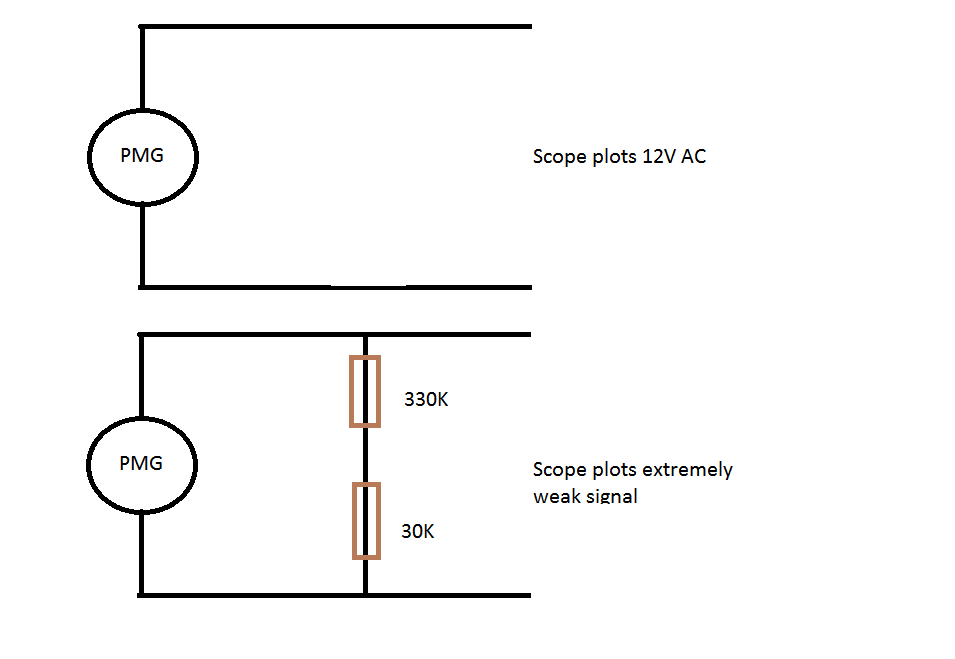A small alternator type 4-pole permanent magnet generator(PMG) outputs AC sinusoidal voltage from 1V to 30V where output voltage amplitude increase with frequency.
I first set the generator to rotate with a constant rpm. When I hook up the output of the PMG directly to the oscilloscope I can see the true voltage output. So far so good..
My aim is to decrease the voltage output of this PMG by a voltage divider and couple it to a comparator as an input. The reason is, if I don't do that the input to the comparator from the PMG will exceed comparator's rail voltages at high rpm.
So I decided to use a 330k and a 33k resistor to make a voltage divider. I set the generator rpm such that its output was 12V when hooked up to the scope.
Then I coupled the output of the PMG to this voltage divider. I wanted to be sure if I'm doing things in the right way, so I checked the voltage across the voltage divider (across 330+30 = 360k), and what i saw was there was almost no signal in the scope. The voltage output dramatically dropped.
Here is a simple illustration about what I wrote:
Why does it happen? Should I use a much higher resistors values for the voltage divider?

simulate this circuit – Schematic created using CircuitLab
Figure 1 and 2. 12 V AC on open circuit. 0 V when loaded with 360k.

